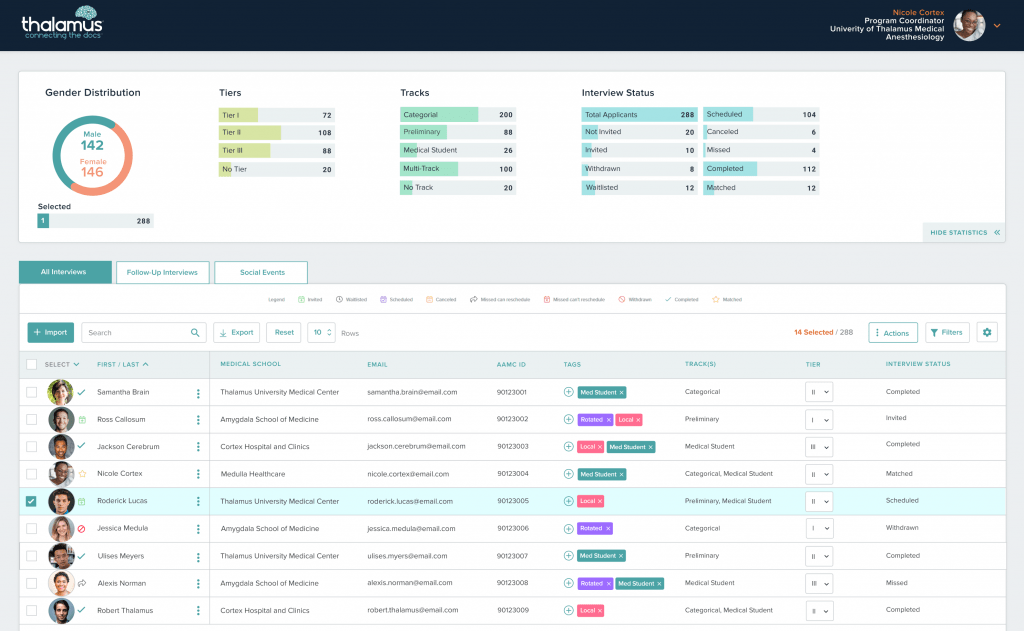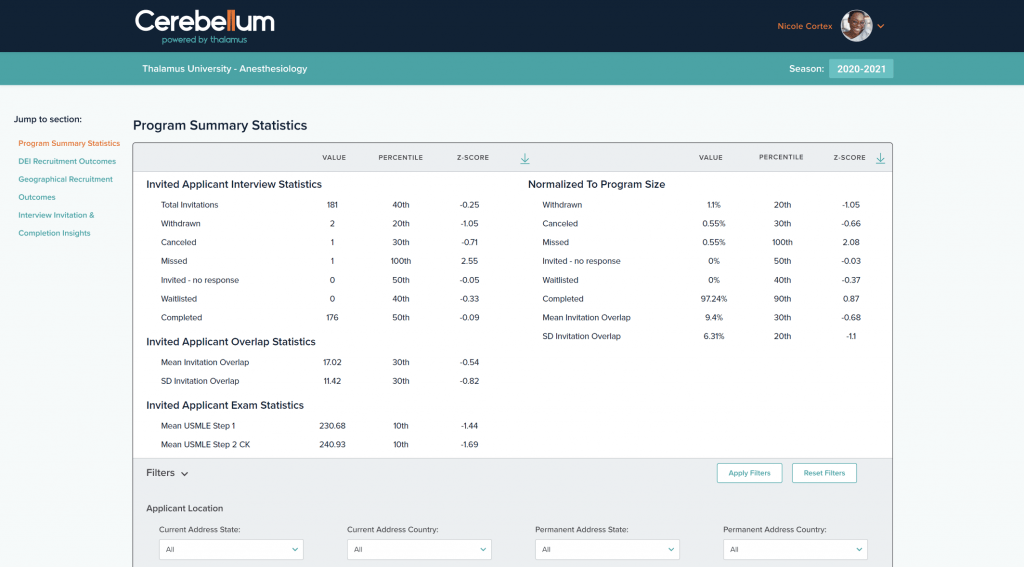This 5-part blog series, The Ultimate Guide to Preference Signaling for Medical Residency for Applicants and Programs 2022-2023 includes:
- Part 1: Introduces the history of preference signaling.
- Part 2: Describes its introduction to GME.
- Part 3: Discusses outcomes to date.
- Part 4: Provides advice for applicants and programs.
- Part 5: Describes how Thalamus will support this initiative.
This is Part 5: How Thalamus will support Preference Signaling for Programs in 2022-2023.
How Thalamus Incorporates Preference Signaling into its Software:
Given the wider adoption of preference signaling for the 2022-2023 ERAS and Match recruitment season, Thalamus is excited to announce that we plan to fully support this initiative for our Thalamus program users! Thalamus will integrate preference signaling into our products and features as follows.
- Support of preference signaling data in Thalamus Core and/or Cortex: There has been a lot of interest in incorporating ERAS signaling data into Thalamus/Cortex for ease of screening and applicant review/data tracking. Thus, CSV uploaded will be included to accommodate faculty and program leadership in promoting holistic review.
- Tagging/Denoting Applicants who preference signaled: Thalamus includes a unique tagging feature (link to user guide article) that allows program users to create “post-it” notes that are customized by text and color to denote important pieces of information. These tags are not only filterable, but also included on our various reports.

- Incorporation of Signaling into Cerebellum Data and Analytics Dashboard: Cerebellum will incorporate signaling data from Thalamus/Cortex for intra-season and post-match analysis of program data including for DEI, geographic and other analyses for both programs and institutions.

For programs interested in learning more about how Thalamus, Cortex, and Cerebellum can assist your preference signaling process this upcoming interview season contact us at sales@thalamusgme.com or request a demo.
Summary: Preference Signaling for Applicants and Programs 2022-2023.
Overall, the 2022-2023 residency recruitment cycle will include broader use of preference signaling, including 19 total specialties. Initial outcomes data appear positive, though effects on application, interview and match statistics require further study. The allocation of signals, as well as the guideline of whether to signal either home programs or away rotations, varies widely amongst specialties, prompting different recommendations for each sub-category (few, more and many preference signals). There are varying opinions and guidelines on how preference signaling will be used, including as a screening tool, as part of holistic review, post-interviews and during rank list composition. Some uses are governed and protected by the NRMP Match Participation Agreement, but others appear more broadly interpretable. Regardless, it will be very interesting to observe the overall effects of preference signaling on the Match process and Thalamus is there to assist every step of the way!
